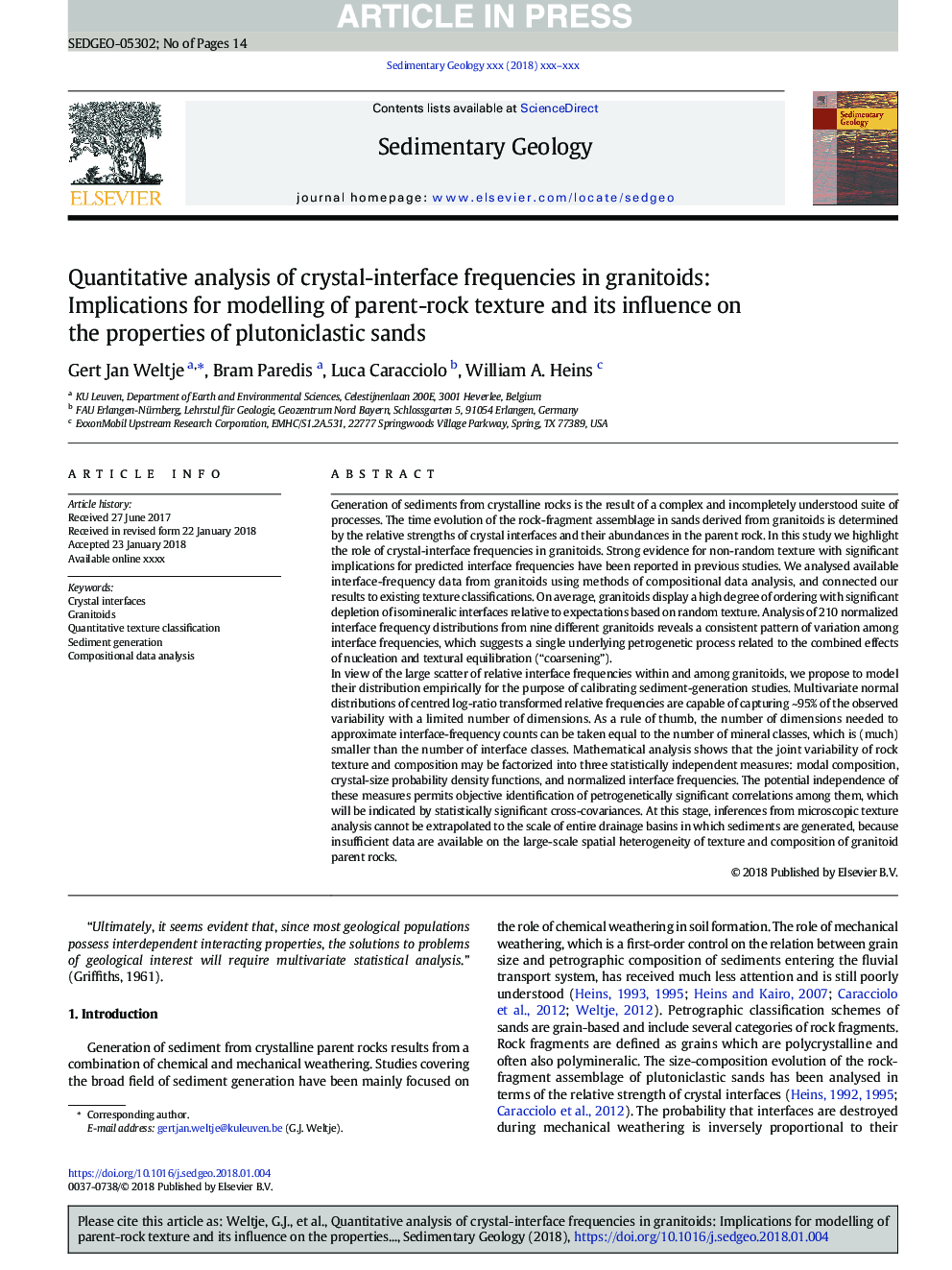| Article ID | Journal | Published Year | Pages | File Type |
|---|---|---|---|---|
| 10224273 | Sedimentary Geology | 2018 | 14 Pages |
Abstract
In view of the large scatter of relative interface frequencies within and among granitoids, we propose to model their distribution empirically for the purpose of calibrating sediment-generation studies. Multivariate normal distributions of centred log-ratio transformed relative frequencies are capable of capturing ~95% of the observed variability with a limited number of dimensions. As a rule of thumb, the number of dimensions needed to approximate interface-frequency counts can be taken equal to the number of mineral classes, which is (much) smaller than the number of interface classes. Mathematical analysis shows that the joint variability of rock texture and composition may be factorized into three statistically independent measures: modal composition, crystal-size probability density functions, and normalized interface frequencies. The potential independence of these measures permits objective identification of petrogenetically significant correlations among them, which will be indicated by statistically significant cross-covariances. At this stage, inferences from microscopic texture analysis cannot be extrapolated to the scale of entire drainage basins in which sediments are generated, because insufficient data are available on the large-scale spatial heterogeneity of texture and composition of granitoid parent rocks.
Related Topics
Physical Sciences and Engineering
Earth and Planetary Sciences
Earth-Surface Processes
Authors
Gert Jan Weltje, Bram Paredis, Luca Caracciolo, William A. Heins,
